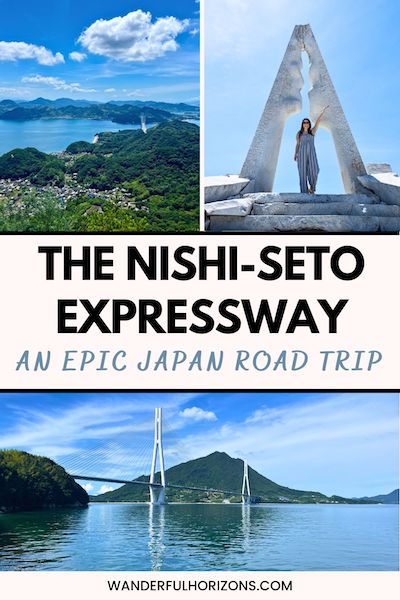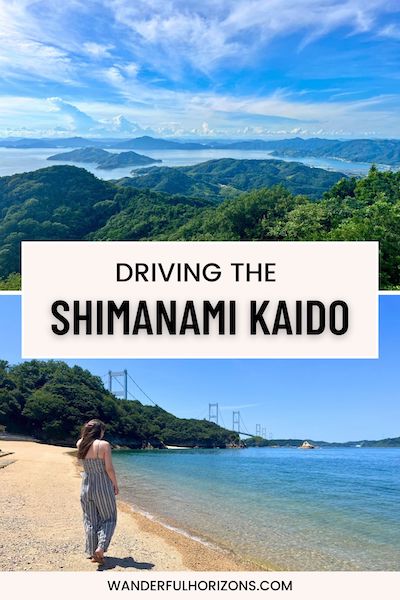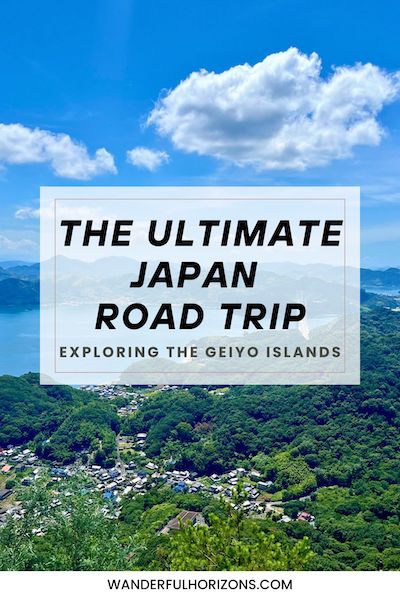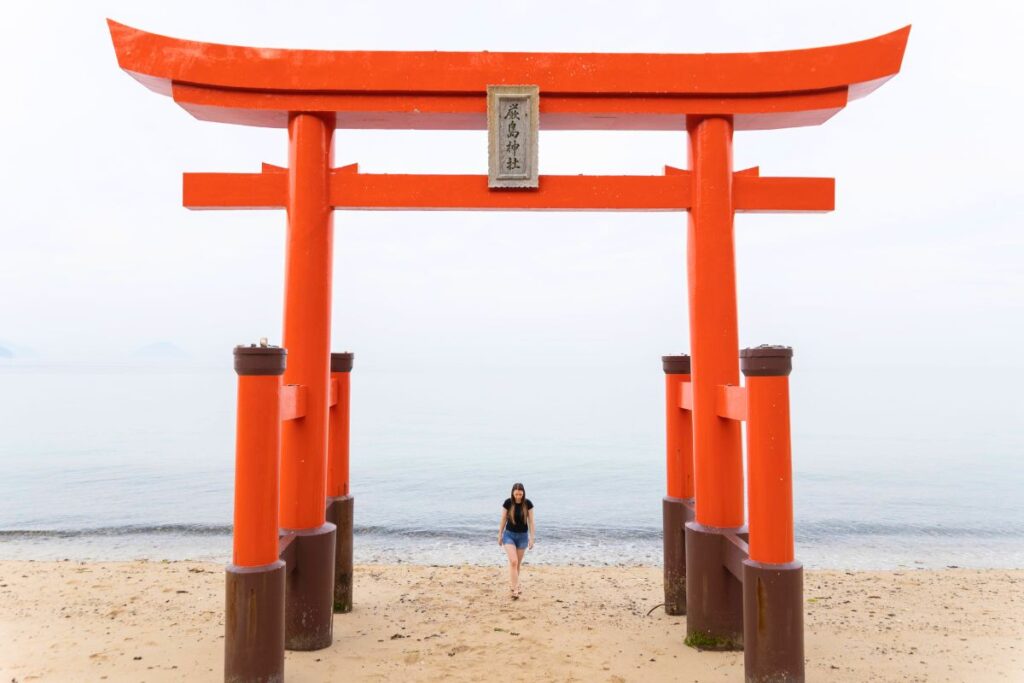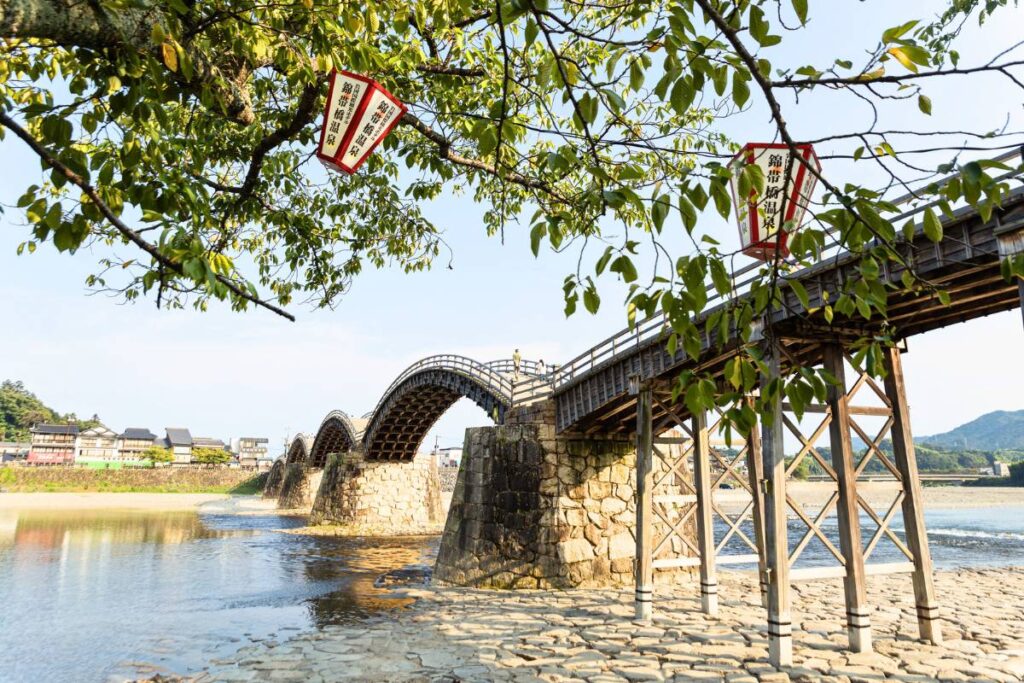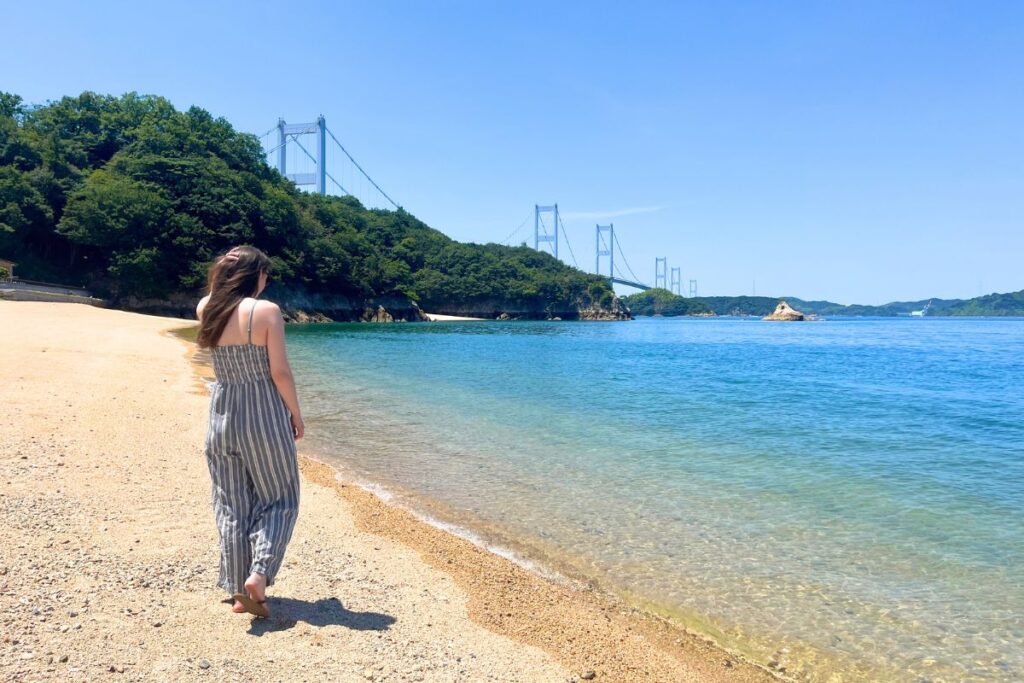
Dreaming of a coastal Japanese road trip? Then look no further! Because I’ve got you covered with this complete guide to the Nishi-Seto Expressway!
Connecting the cities of Onomichi and Imabari, the Nishi-Seto Expressway travels through six picturesque islands located within the Seto Inland Sea.
Known as the Geiyo Islands, these islands are home to stunning overlooks, tranquil beaches, scenic bridges, and unique historical sites.
While most people opt to explore this region of Japan via the Shimanami Kaido bike route, the Seto Expressway is a great alternative for those who’d prefer the comforts of a car.
As someone who isn’t much of a biker, myself, I recently opted to take this very road trip. And I must say, it was just as beautiful as I’d imagined it would be.
If you’re looking for an adventure that takes you off the beaten path and offers stunning views with authentic experiences, then I highly recommend adding this lesser-known route to your itinerary.
That being said, let’s hit the road and discover the wonders of the Nishi-Seto Expressway and its remarkable Geiyo Islands.
*Please note: This post contains affiliate links to trusted partners. If you make a purchase using these links, I will earn a commission at no extra cost to you. Thank you for your support!
Where is the Nishi-Seto Expressway?
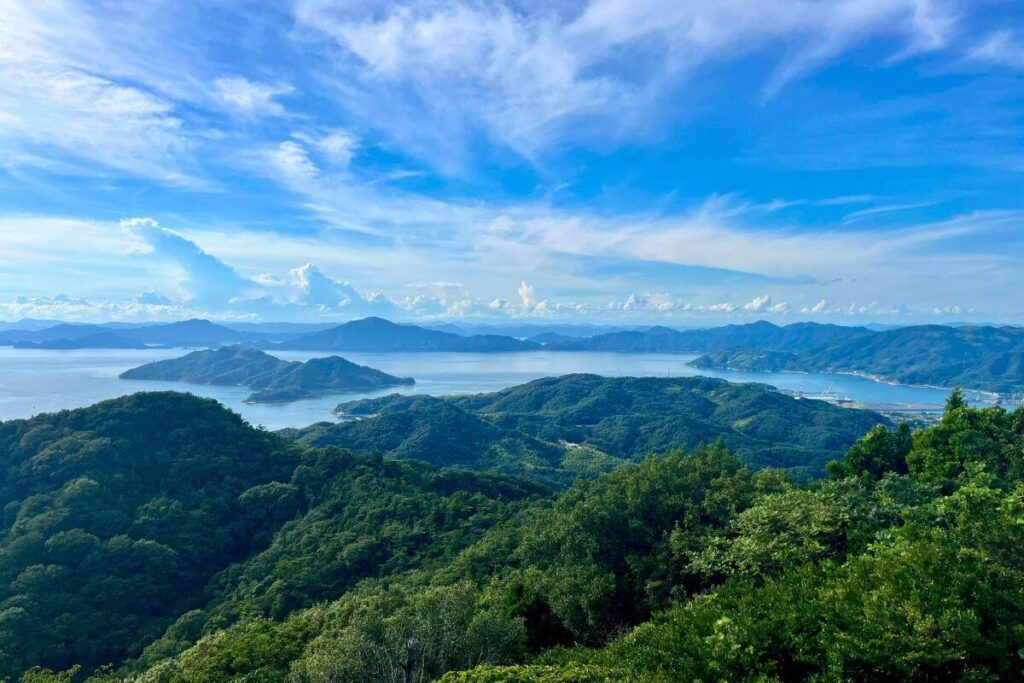
View of the Seto Inland Sea from Oshima Island.
The Nishi-Seto Expressway is a 47-kilometer toll road that lies in the heart of the Seto Inland Sea.
Traveling through the Setonaikai National Park, the expressway begins in Onomichi on the island of Honshu and ends in Imbarai, which is located on Shikoku Island.
Along the way, it passes through six of the Geiyo Islands, each of which is known for its scenic beauty and natural landscapes.
Visitors to the area have the option to begin their adventures on either side of the expressway. However, most people opt to start in Onomichi, given its close proximity to the city of Hiroshima.
From Hiroshima, Onomichi is about an hour and a half away by car. Or you can travel by train to Onomichi Station, which also takes about an hour and a half.
The closest airport, for those flying in, is Hiroshima Airport (HIJ), which is located approximately 40 minutes away by car.
If you’d prefer to come in the opposite direction, you can either fly into Matsuyama Airport (MYJ) or take the train to Imabari Station.
Getting Around the Nishi-Seto Expressway
The easiest and most convenient way to travel along the Nishi-Seto Expressway is by car.
Car rentals are available at both Hiroshima Airport and Matsuyama Airport. And, you can also find local rental companies within the cities of Hiroshima and Imabari.
Unfortunately, at the time of writing this, I was unable to find any guided tours that travel through the islands.
So, unless you plan to bike along the Shimanami Kaido, a car rental is your best option.
Pro Tip: Some car rental companies will let you pick up and drop off your vehicle at different locations. This will save you the hassle of driving all the way back through the islands at the end of your trip.
Driving in Japan
If you plan to rent a car in Japan, make sure you look into the Japanese license requirements specific to your home country. Depending upon where you reside, you might need to obtain an International Driver’s Permit or a translated copy of your home country’s driver’s license. And, in some specific cases, you may even be required to obtain a Japanese driver’s license.
For those traveling from the United States, Canada, Australia, Singapore, and most European countries, an International Driver’s permit is required. You can obtain this from an authorized automobile association in your home country.
Best Time to Explore the Nishi-Seto Expressway
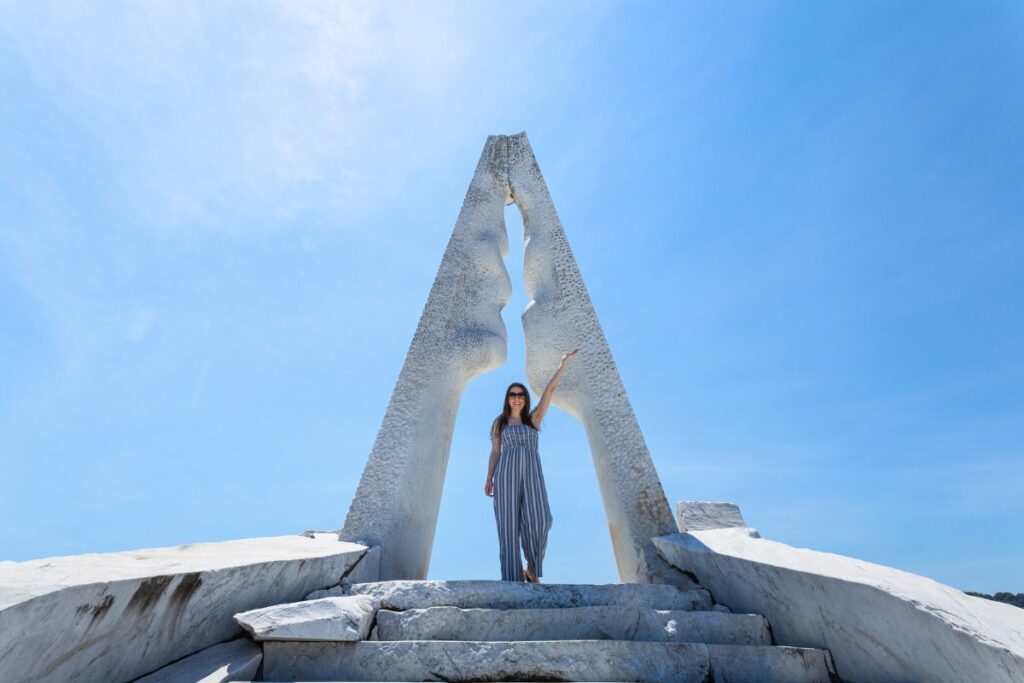
At the Hill of Hope on Ikuchi Island.
While you can certainly explore the Geiyo Islands any time of the year, I recommend planning your road trip for either spring or fall.
Simply put, this is when you’ll have the best weather with mild temperatures and minimal rain.
Not to mention, the islands are beautiful during these times of the year – think cherry blossoms in the spring and autumn leaves in the fall.
That being said, winter is also a great option to consider. While it will be cooler, you’re less likely to run into other tourists. And prices around this time of the year are usually discounted.
Finally, there’s summer, which I honestly don’t recommend – unless you simply plan to hit up the beach.
I traveled through the islands during the height of summer and it was HOT. So hot, in fact, that we didn’t end up doing everything we wanted to (hiking in 90°F weather just didn’t seem that appealing).
So, while summer is an absolutely beautiful time of the year, it’s also very hot and can be uncomfortable, depending on what you have planned.
Map of the Nishi-Seto Expressway
To help you plan out your trip, here’s a quick map overview of all the destinations mentioned in this guide to the Geiyo Islands.
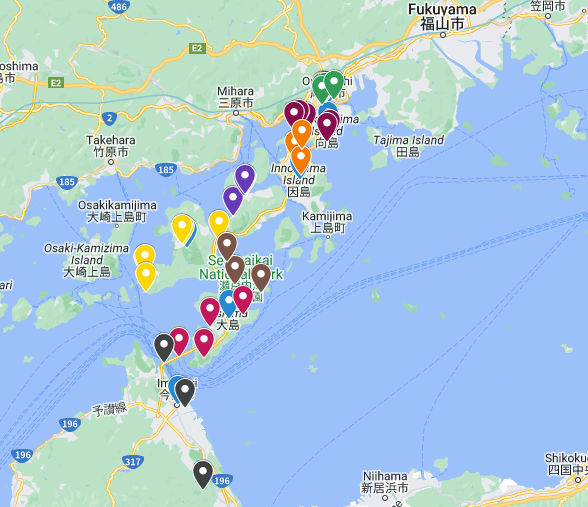
If you’d like to view an interactive version of this map, click here!
6 Incredible Islands Along the Nishi-Seto Expressway
Without further ado, here’s an overview of the 6 remarkable islands that lie along the Seto Expressway!
Mukaishima Island
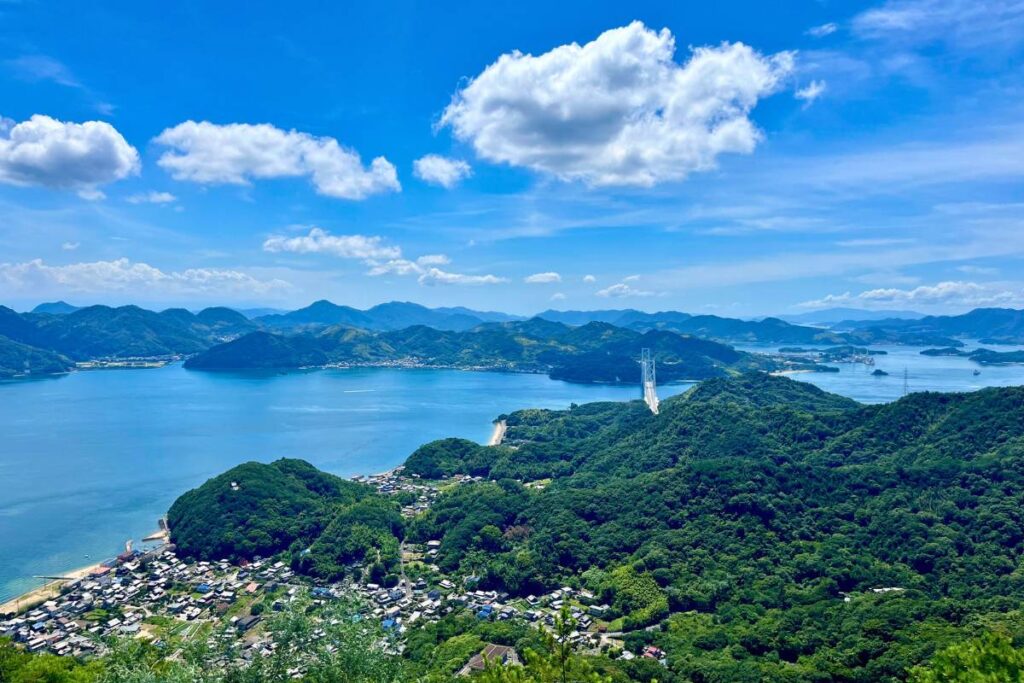
The view at Takamiyama Viewpoint.
Situated just across Onomichi Bridge, lies Mukaishima, a lush island renowned for its breathtaking views of the Seto Inland Sea.
Here, you can admire not only the city of Onomichi but also a stunning array of islands.
For the absolute best vantage point, make your way up to Takamiyama Viewpoint. This observation deck, which is perched on top of the island’s highest peak, is accessible via hiking or by car.
While you’re in the area, be sure to also stop by Ushio Chocolatl. Known for its use of local cacao beans, this chocolate shop is quite popular among locals and visitors alike.
And, finally, if you’re up for a mini excursion, consider a trip to nearby Iwashi Island. Along the way, you can take in the sites of Mukaishima Bridge and visit Iwashijima Itsukushima Shrine, which is beautifully situated right on the beach.
Pro Tip: The road up to Takamiyama Viewpoint is very small and windy, so be careful of passing cars.
Innoshima Island
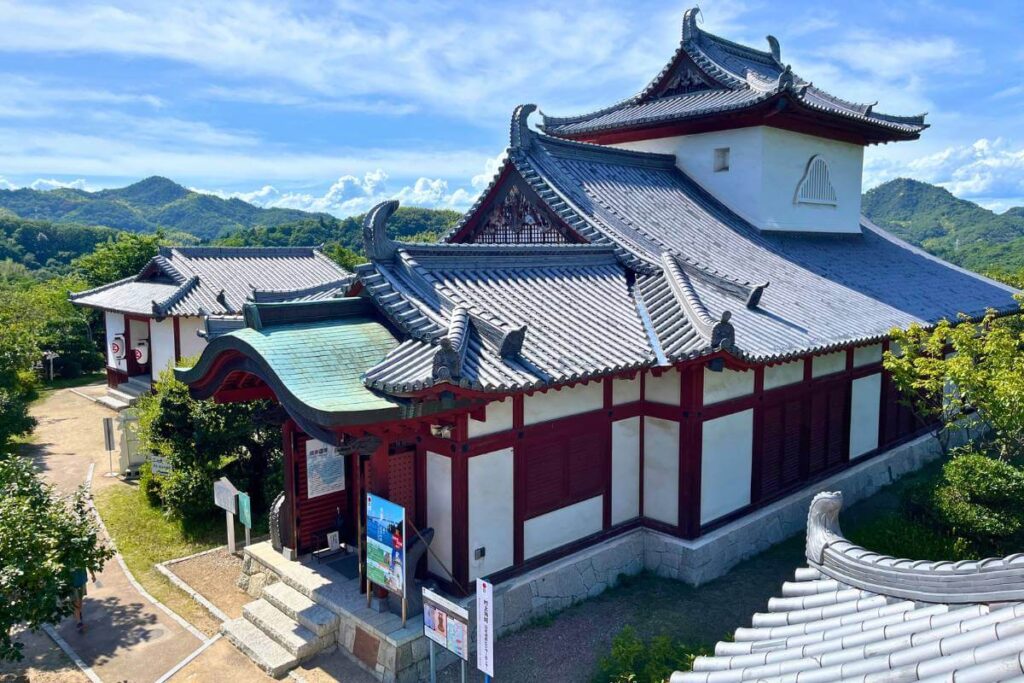
The main building at Innoshima Navy Castle.
Once home to Japan’s Murakami pirates, Innoshima offers a blend of historical and natural attractions.
Here, you’ll find everything from pristine beaches to historic castles, stunning lookout points, and ancient temples.
To learn more about the island’s former pirates, be sure to stop by Innoshima Navy Castle, also known as Innoshima Suigun Castle. This replica fortress and museum offers fascinating insights into Japan’s maritime history.
Another key site linked to Japan’s pirate era is Mt. Shiratakiyama, where the Shiratakiyama Observation Deck resides.
Once used by pirates as a lookout point and place of worship, the observation deck is now a popular hiking spot and viewpoint. It also happens to be home to approximately 700 Buddha statues.
And, lastly, we have Shimanami Beach. Offering white sandy shores, blue-green waters, and a variety of amenities, it’s the perfect spot to unwind and enjoy the island’s natural charm.
Ikuchi Island
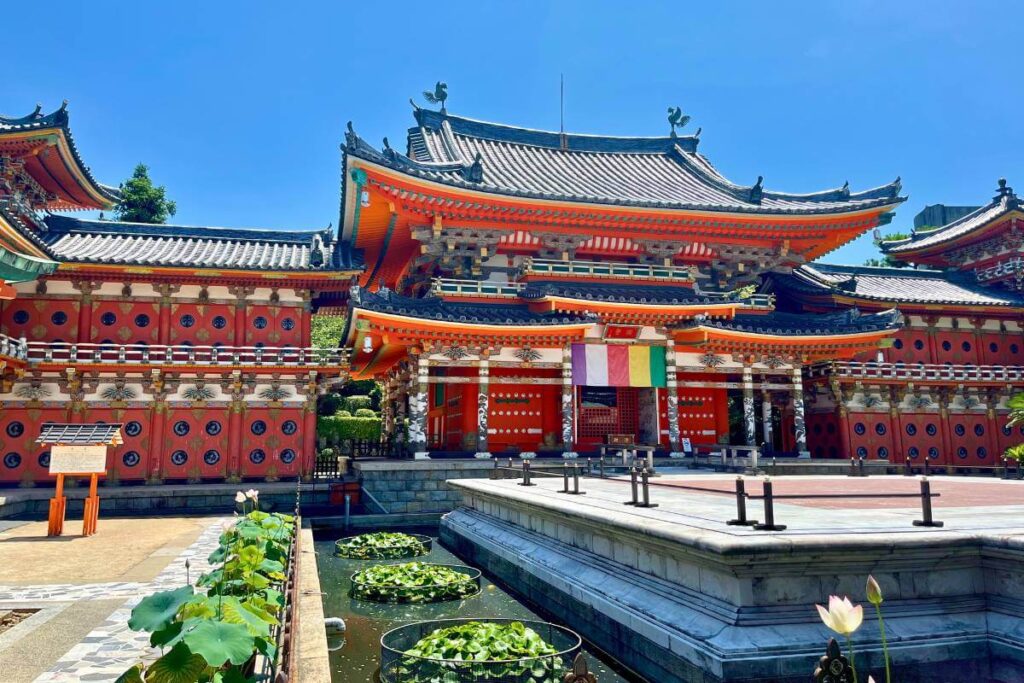
The main hall at Kousanji Temple.
Known as Japan’s Lemon Island, Ikuchijima is the top producer of lemons in the country.
However, the island’s appeal extends far beyond its citrus production, as it also boasts a rich array of historical and natural attractions.
From stunning temples to scenic beaches, mesmerizing statues, and traditional works of art, there’s plenty to do and see here.
One of the island’s most popular destinations is Kousanji Temple. Founded in 1936, this intricate temple complex features a 5-story pagoda, several religious halls, and a cave adorned with 1,000 Buddha statues.
Within the temple grounds, you’ll also find the island’s famous Hill of Hope. Created by an Italian sculptor, this marble garden is filled with a variety of monuments that are meant to represent peace and hope for the future.
Aside from this, art enthusiasts should also be sure to visit the Hirayama Ikuo Museum of Art. Here, you’ll find the traditional work of Ikuo Hirayama, one of Japan’s most celebrated artists.
And, last but certainly not least, there’s Setoda Sunset Beach – which, as you may have guessed, offers amazing sunset views.
Omishima Island
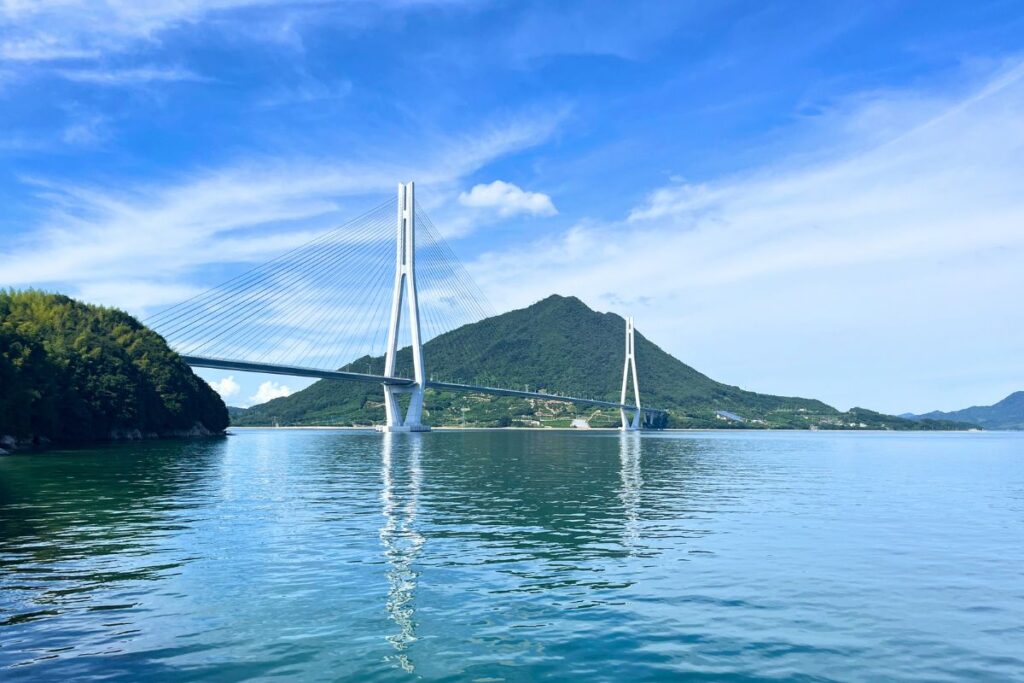
The view of Tatara Bridge from Tatara Shimanami Park.
The largest island on our list, Omishima stands out as a significant religious and artistic destination within the Seto Inland Sea.
In total, the island is home to four notable art museums: Toyo Ito Museum of Architecture, the Imabari City Ken Iwata Mother and Child Museum, the Tokoro Museum, and the Omishima Museum of Art.
In addition to this, the island also houses one of the most important shrines in Japan, Oyamazumi Shrine. Dedicated to samurais and soldiers, the shrine features an impressive collection of samurai armor and weaponry.
Also worth mentioning is the Tatara Shimanami Park, which offers incredible views of the Seto Inland Sea and Tatara Bridge.
Hakatajima Island
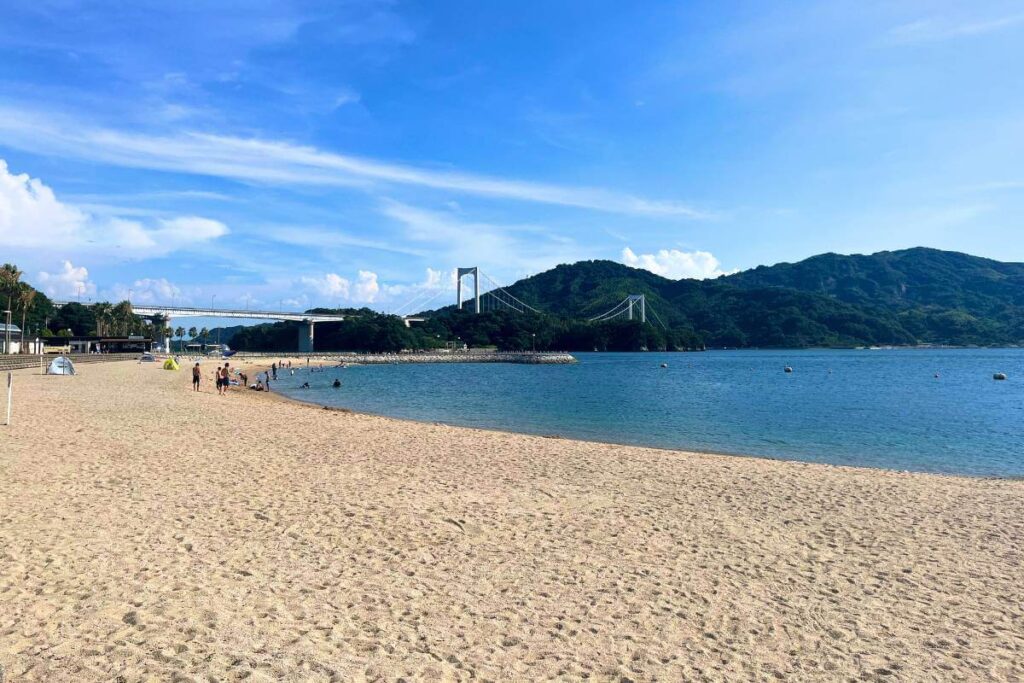
The beach at Hakata S-C Park.
Hakatajima may be the smallest island on the Nishi-Seto Expressway, but it’s still worth exploring.
Here, you’ll find a variety of incredibly scenic vantage points, stunning beaches, and picturesque campgrounds.
For the best views on the island (especially during cherry blossom season!), be sure to check out Hirakiyama Park. Situated on top of Mt Hirakiyama, this park is home to a panoramic observation deck where you can observe more than 1,000 cherry trees.
Meanwhile, on the opposite end of the island, lies Hakata Okiura Beach, a long white sandy beach that offers great views of the ocean.
And, finally, for those who may be short on time, we have Hakata S-C Park. Situated right off the expressway, this park features a public beach, shops, restaurants, and a nearby campsite.
Oshima Island
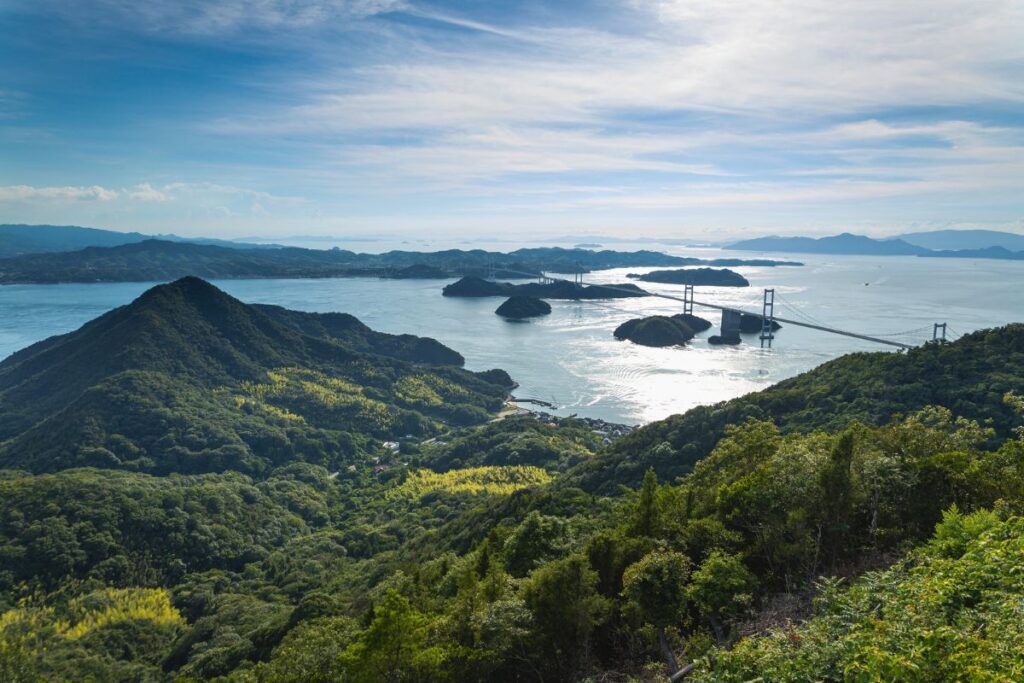
The view from Kirosan Observatory Park.
Situated closest to the city of Imabari, Oshima is the final island on our list – and the one that offers some of the best views.
To take in these views for yourself head up to Kirosan Observatory Park. Located at the top of Mt. Kiro, this observatory offers an unforgettable vantage point overlooking the region’s most famous bridge, the Kurushima-Kaikyo Bridge.
Another notable destination on Oshima is the Murakami Kaizoku Museum. Housed in what looks to be a replica castle, this museum features a variety of artifacts, relics, and documents dating back to Japan’s pirate era.
And, for those who’d prefer more natural attractions, there’s the Yoshiumi Rose Park. Spanning 2.8 hectares, the property is home to approximately 3,500 rose bushes of more than 400 varieties.
Pro Tip: If you hope to grab a few photos from Kirosan Observatory Park, be sure to visit earlier in the day. When the sun sets here, it really obscures your view of the bridge!
Bonus Stops Along the Nishi-Seto Expressway
While you’re traveling along the Nishi-Seto, be sure to also visit these gateway destinations!
Onomichi City
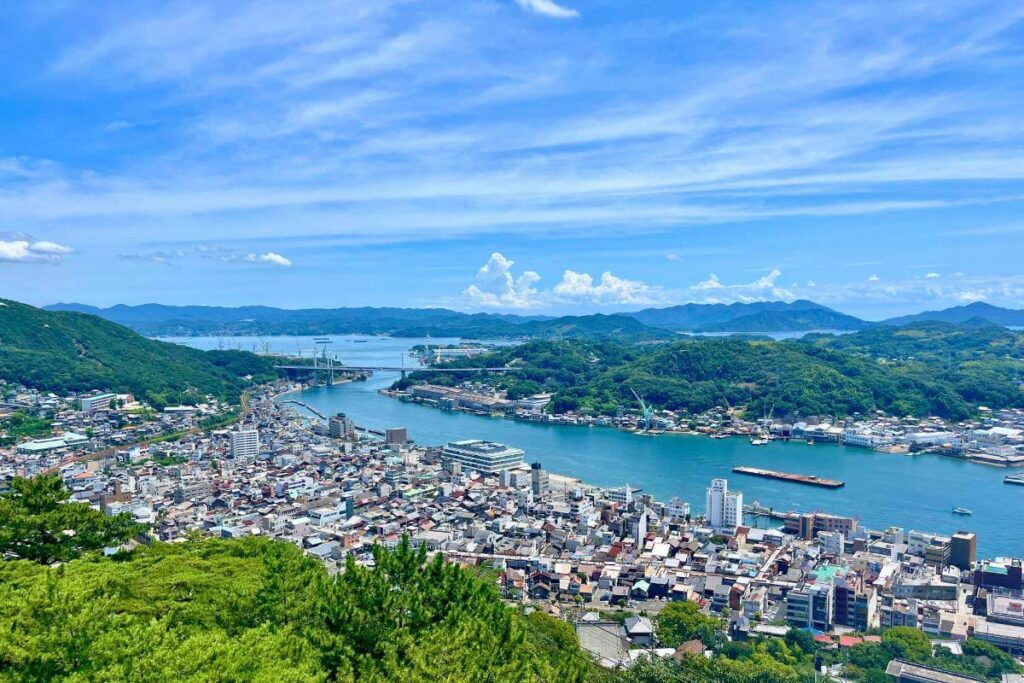
The view from Senkoji Park.
Known as the city of hills, Onomichi is much more than a gateway to the Nishi-Seto Expressway.
Here, you’ll find everything from historic temples to stunning coastal views, amusing artwork, and delectable local cuisine.
One of the most prominent attractions in the city is Senkoji Park, which is home to Senkoji Temple, the Onomichi City Museum of Art, and an incredibly scenic observatory. Perched at the summit of Mt. Senkoji, the park is accessible via ropeway or by car.
Another popular destination is the Onomichi Temple Walk. Weaving through small residential areas, this trail leads visitors to more than 25 historic temples and shrines.
And, finally, for our art (and cat) lovers out there, there’s Neko no Hosomichi, also known as Cat Alley. Spanning 200 meters, this street is filled with unique cat statues and artwork. If you’re lucky, you may even spot a real cat or two!
Imabari City
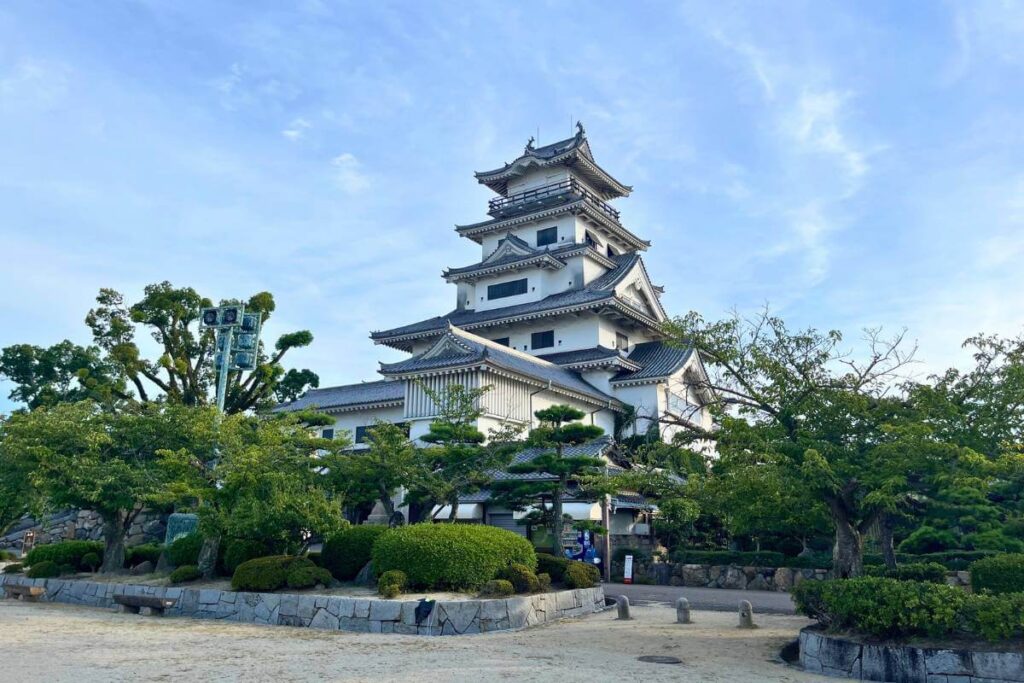
The main keep at Imabari Castle.
Situated on Shikoku Island, Imabari is a unique port city that may be lesser known, but is still worth a visit – if you have time.
While there aren’t a ton of attractions to see here, the city is home to a few notable destinations. The most famous of which is Imabari-jo Castle.
Dating back to the 1600s, this impressive castle is one of only three castles in Japan to be built right along the sea. In fact, the castle’s moat consists of saltwater – which means you can sometimes see seawater fish swimming around!
The city’s other claim to fame is its towel industry – which is actually renowned worldwide. The towels, which are known to be some of the softest and most absorbent, can be found on sale throughout the city. There’s even a Towel Museum, if you’d like to learn more about the city’s towel production.
Meanwhile, for those interested in exploring the coast, Imabari is home to a number of beaches and coastal viewpoints. One particularly popular spot is the Kurushima Strait Observatory, which offers views of the Kurushima-Kaikyo Bridge.
Frequently Asked Questions About Traveling the Nishi-Seto Expressway
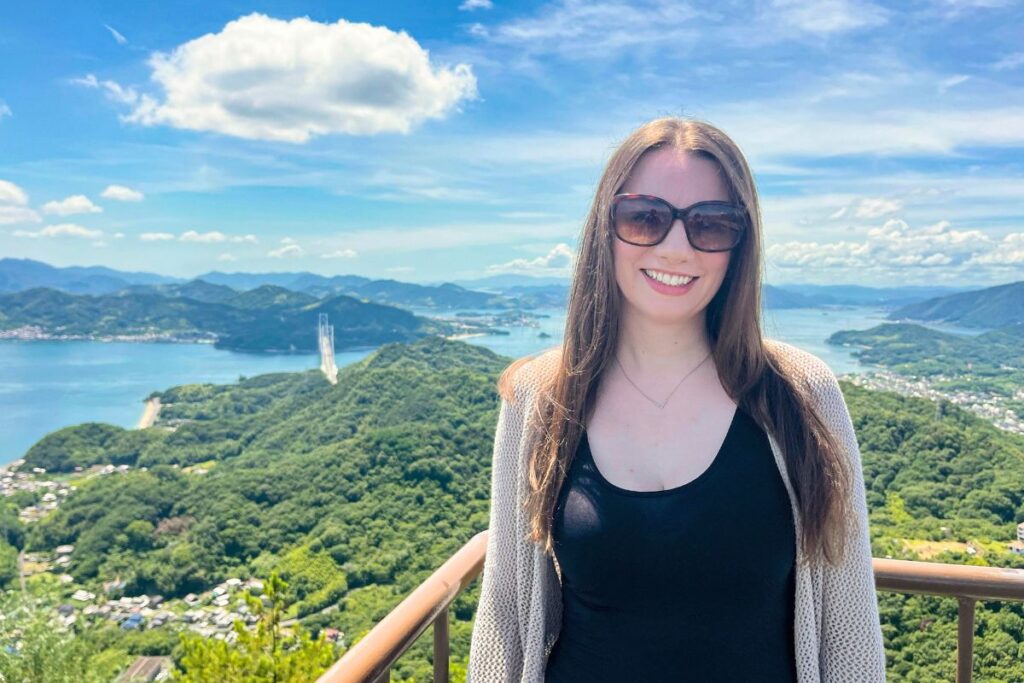
Here are my thoughts on some commonly asked questions about visiting the Geiyo Islands.
Are the Geiyo Islands Worth Visiting?
Yes, the Geiyo Islands are definitely worth visiting! Not only are they stunningly beautiful, but they also offer the opportunity to experience a more authentic side of Japan – one that is largely untouched by the impacts of tourism.
How Long Does it Take to Drive the Nishi-Seto?
If you drive the Nishi-Seto Expressway straight from Onomichi to Imabari (or vice versa), it’ll take you about an hour and a half, with no stops. However, I highly encourage you to take your time and make a few pit stops along the way – if for no other reason than to get out and appreciate the beauty of these incredible islands!
How Much Time Should I Spend in the Geiyo Islands?
I’d recommend spending 3-4 days in the Geiyo Islands, depending on how many attractions you’d like to visit. I did the trip in two days, but it was very rushed and, in retrospect, I wish I had more time to fully explore each island.
Should I Visit Every Island Along the Nishi-Seto Expressway?
While I do think that every island offers its own unique experiences and attractions, it’s not necessary to visit them all. If you’re short on time, I’d recommend prioritizing the islands of Innoshima, Ikuchijima, and Oshima.
Are There Other Islands Nearby That I Can Also Visit?
Yes, there are several nearby islands that you can visit! In fact, the Geiyo Islands encompasses a handful of additional islands, they just aren’t accessible via the Nishi-Seto Expressway. Those that I am most familiar with include Osakikamijima Island, which is celebrated for its pristine beaches, and Okunoshima Island, Japan’s famous Rabbit Island.
Final Thoughts: Nishi-Seto Expressway
So there you have it – my complete guide, thoughts, and opinions on exploring the Nishi-Seto Expressway. Hopefully, this article is helpful in planning your own road trip through the Geiyo Islands.
Regardless of which islands you opt to visit, I’m sure you’ll have an incredible time! After all, this region of Japan is truly unique and incredibly beautiful!
Planning a road trip along the Nishi-Seto Expressway? Which island are you most excited to visit? Let me know in the comments below!
Enjoy this post about the Nishiseto Expressway? Pin it now for later!
